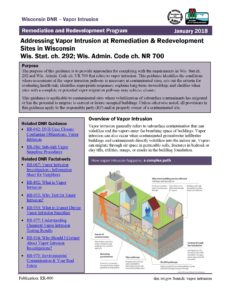Chemicals that have seen industrial use for decades are now beginning to be better understood by scientists and others concerned with their potential impacts to human health and the environment. Per- and polyfluoroalkyl compounds (PFASs) are a class of emerging contaminants known to impact environmental media, such as groundwater, soil, sediment and surface water.
Additional information about PFASs can be found on the EPA’s web page, the ITRC’s collection of fact sheets and through the Agency for Toxic Substances and Disease Registry (ATSDR).
When discharged to the environment, PFAS compounds meet the definitions of hazardous substance and/or environmental pollution under Wis. Stat. § 292.01. Discharges of PFASs to the environment are subject to regulation under Wis. Stat. § 292 and the requirements for immediate notification, investigation, and remediation in Wis. Admin. Code chs. NR 700 through 754.

